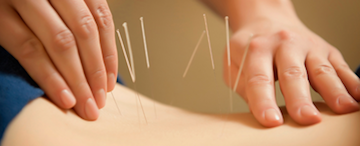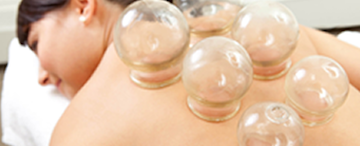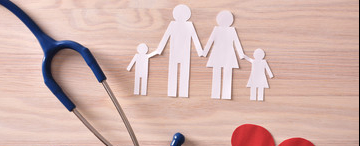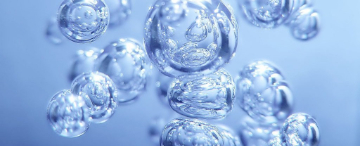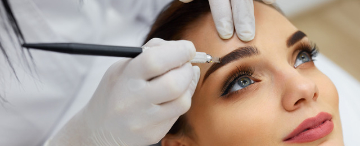Eastern Medicine
Traditional Eastern Medicine dates back several thousand years. It survived for so long because it is very effective, and most importantly does not cause side effects after treatment. Eastern medicine treats the person as a whole, allowing for faster and better treatment results. Man is whole and none of his individual organs can function independently in isolation from the rest of the body. Indisposition of one organ immediately affects the others. Eastern medicine looks for and treats the true cause of the disease and not just its effects.
We invite you to experience the unique technique of pulse diagnosis - used for centuries in the Far East. It is a sensitive test which enables the capture of the first symptoms and disorders in the work of internal organs. So you can take appropriate treatment early, not allowing to develop severe disease.
In the diagnosis based on the principles of Eastern medicine, the doctor uses the sense organs. Sometimes you only need to look at the patient in order to diagnose his illness. Especially the appearance of the face and eyes gives a lot of tips. The tone of voice and speech of the patient and his breath, and in particular the smell from the mouth also gives some information for a closely watching physician. The diagnosis involves determining the disturbed balance in the whole body and in the specific organ. The diagnosis using various methods such as pulse examination, observing the eyes, language, the patients behaviour, urine etc. These methods were developed as a result of thousands of years of observation, they have stood the test of time and are still used today as a way of treatment.
According to Eastern medicine different organs have their correspondents in the sensory organs. For example, eye problems (itching, burning, a feeling of having sand in the eyes, chronic conjunctivitis, blurred vision, etc.) can be a signal of liver indisposition. Similarly, hearing impairment may indicate problems with your kidneys. If someone suffers from sight problems mentioned above, and visiting an eye doctor does not help, they should consider whether the cause of the disease does not lie elsewhere - in this case in the liver.
In the modern world, Eastern medicine specialists benefit from studies of conventional medicine (blood tests, ultrasound, X-ray, CT, MRI and others) in their diagnosis and simultaneously use diagnostic skills used in the Far Eastern medicine. This combination gives a fuller and more accurate picture of the patient's health - in fact, these methods complement each other. And thanks to a precise diagnosis it is easier to apply an appropriate treatment. This is undoubtedly of considerable benefit to the patient.
The advantage of Eastern medicine is approaching the human being as a whole, one coherent formation.
A doctor applying principles of Eastern medicine focuses not only on treating the sick organ, but looks at the patient much more broadly and deeply studies the cause of the their disease. This approach enables the classification of the individual characteristics of the human psychosomatic. After diagnosing a disease, the doctor selects an individual treatment scheme, meaning: the type of procedures and administered drugs, in terms of psycho-physical individual traits of the patient. This procedure provides a more effective treatment. It is known that not all individuals respond alike to the same drug. It happens that patients simply cannot tolerate certain medications for unexplained reasons, others again have a contraindication to their use. Individual selection of drugs for each patient is therefore very important. So it is with the eating habits. A number of dieting systems are known depending for example on one’s blood type, age or body weight. Some people eat a lot of fatty products and manage to live a long life, preserving a slim silhouette and low cholesterol level. Others eat a lot of fruits and vegetables, avoid animal fat, yet are subjected to cardiovascular diseases. Therefore, choosing the right diet, depending on the time of year for each patient is equally important as selecting the appropriate method of treatment.
The principles of treatment in Eastern medicine.
The basic principle used in Eastern medicine says that the human body is one entirety. After all, none of the organs are able to function independently, separated from the rest of the body. Our organs are connected to each other, therefore a disfunction of one will affect the condition of others. For example, when an improperly functioning liver throws too much bile, it will cause the disfunction of the stomach or pancreas. On the basis of a detailed diagnosis and examination, the physician will determine the individual characteristics of the patient and the cause of the disease specifically for that individual. They take may factors into account, such as the patient’s diet, their behaviour, temperament, habits, occupation and many others. To choose the appropriate methods of treatment, the doctor has to get to know the patient and the particular causes of the ailments that may arise, for example, from a bad diet or lifestyle. Eastern medicine does not stick strictly to their treating methods. A disease can be treated in many different ways, depending on the individual characteristics of the patient. We know that not every drug works equally on everyone. It might work for some, and for others not, and to some it may even be harmful. That is why it is so important to get to know the patient on all levels in order to make a well adjusted treatment and the selection of suitable medication. Eastern medicine focuses on the treatment of the disease, not only the symptoms. For example, headaches are treated as symptoms of various diseases and not a separate disease entity. These conditions may for example occur as symptoms associated with a disease of the stomach or the gall bladder.
Integrated Medicine.
Eastern medicine does not exclude or negate the achievements and the knowledge of Western medicine - the classical medicine. On the contrary, recently we observed trends for mutual complementarity and cooperation between these two courses. Hence, the recently fashionable concept of Integrated Medicine, which combines centuries-old traditions and experience of Eastern Medicine and achievements of Classical Medicine related to the development of modern science and technology. It seems that integrated medicine may be the future of medical science. Acupuncture, herbal medicine, and other proven methods of treatment used in Eastern Medicine perfectly complement and sometimes even replace traditional medical treatment. Currently, scientific studies are being conducted all over the world on the effectiveness of traditional treatment (Eastern Medicine) and their application in Classical Medicine. Thus, for example, at the University of California in Irvine, a professor of radiology, Zang-Hee Cho, uses the most modern laboratory techniques - e.g. functional magnetic resonance imaging (fMRI) to observe brain activity during needle puncturing of the feet. Professor Cho showed that acupuncture point called muchuang, traditionally pierced in the case of eye diseases, actually stimulates the visual cortex. In a later study, this professor discovered that the puncture points on the foot reduce the pain felt in the toes -‘I once thought it was some secret energy’ - said prof. Cho. ‘Today, I hope that soon scientists will learn how acupuncture really works. Perhaps it would be also proved that one well-placed needle will replace twenty others that we use today’ - adds Professor Cho.






